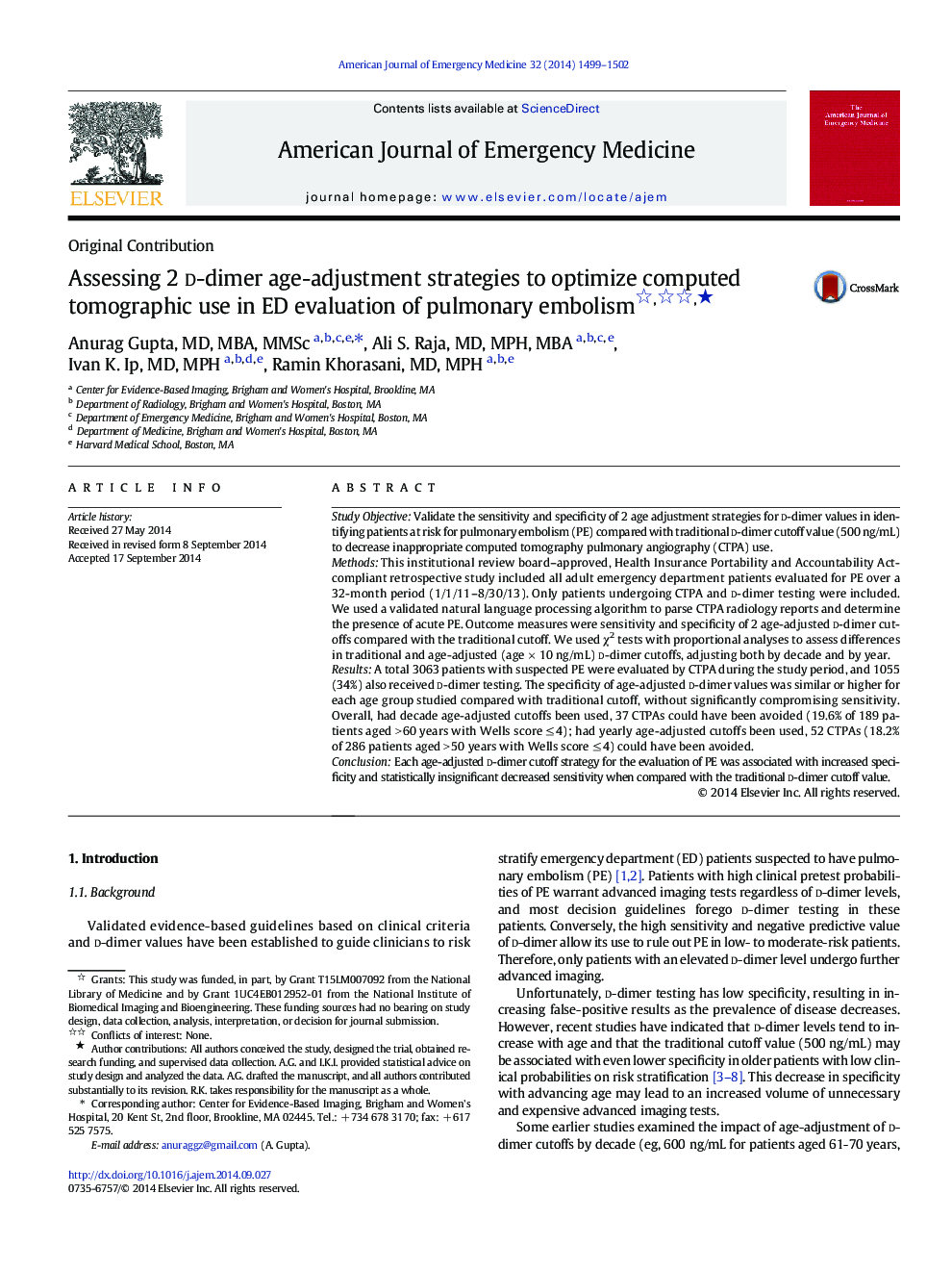| Article ID | Journal | Published Year | Pages | File Type |
|---|---|---|---|---|
| 3224077 | The American Journal of Emergency Medicine | 2014 | 4 Pages |
Study ObjectiveValidate the sensitivity and specificity of 2 age adjustment strategies for d-dimer values in identifying patients at risk for pulmonary embolism (PE) compared with traditional d-dimer cutoff value (500 ng/mL) to decrease inappropriate computed tomography pulmonary angiography (CTPA) use.MethodsThis institutional review board–approved, Health Insurance Portability and Accountability Act-compliant retrospective study included all adult emergency department patients evaluated for PE over a 32-month period (1/1/11–8/30/13). Only patients undergoing CTPA and d-dimer testing were included. We used a validated natural language processing algorithm to parse CTPA radiology reports and determine the presence of acute PE. Outcome measures were sensitivity and specificity of 2 age-adjusted d-dimer cutoffs compared with the traditional cutoff. We used χ2 tests with proportional analyses to assess differences in traditional and age-adjusted (age × 10 ng/mL) d-dimer cutoffs, adjusting both by decade and by year.ResultsA total 3063 patients with suspected PE were evaluated by CTPA during the study period, and 1055 (34%) also received d-dimer testing. The specificity of age-adjusted d-dimer values was similar or higher for each age group studied compared with traditional cutoff, without significantly compromising sensitivity. Overall, had decade age-adjusted cutoffs been used, 37 CTPAs could have been avoided (19.6% of 189 patients aged > 60 years with Wells score ≤ 4); had yearly age-adjusted cutoffs been used, 52 CTPAs (18.2% of 286 patients aged > 50 years with Wells score ≤ 4) could have been avoided.ConclusionEach age-adjusted d-dimer cutoff strategy for the evaluation of PE was associated with increased specificity and statistically insignificant decreased sensitivity when compared with the traditional d-dimer cutoff value.
